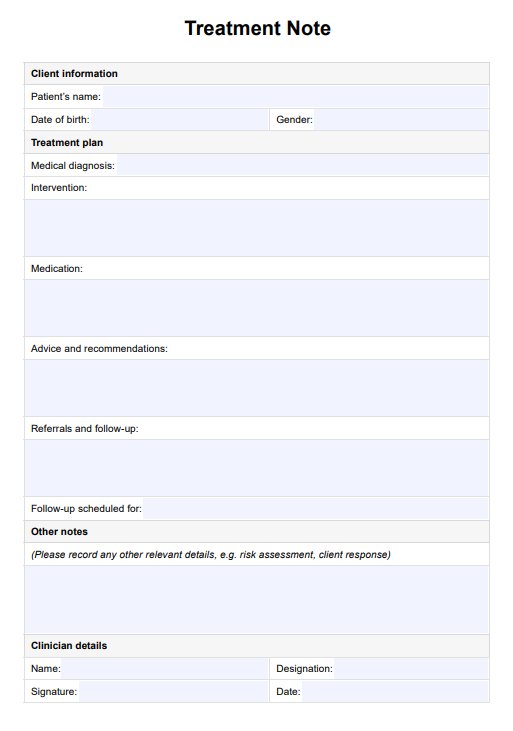Unlike mental health progress notes, there's no black-and-white approach to writing treatment notes. However, it's important that you are concise and are only noting down exactly what is relevant to the patient. Although shorthand is convenient, it is also best to avoid abbreviations where possible, as they can take on different meanings depending on the healthcare field.

Treatment Note Template
Improve your medical documentation using our Treatment Note Template, a free resource for accurately recording healthcare interventions.
Treatment Note Template Template
Commonly asked questions
Anything you did, recommended, or prescribed to aid patient health must go in a treatment note. This includes x-rays, medications, assessments, evaluations, questionnaires, exercises, cognitive techniques, physical instruments used, massages, and more. There's no one specific treatment type—it is simply anything that supports a patient's recovery.
Treatment notes should be taken during each session with a patient. Do not compile multiple sessions in one document, as this can become confusing for other practitioners who may review your notes. Instead, make a treatment note for each session. Ideally, during the session, you make general notes, and then leave some time after the appointment to review and add any additional details. You don't want to take up too much time during your appointments writing things down, as this can detract value from the patient experience.
EHR and practice management software
Get started for free
*No credit card required
Free
$0/usd
Unlimited clients
Telehealth
1GB of storage
Client portal text
Automated billing and online payments











